Unless you live somewhere the climate is always warm, you’ll need an aquarium heater for your tropical fish. Heaters come in all shapes and sizes, so they are not “one-size-fits-all.” The bigger your aquarium, the bigger heater you’re going to need.
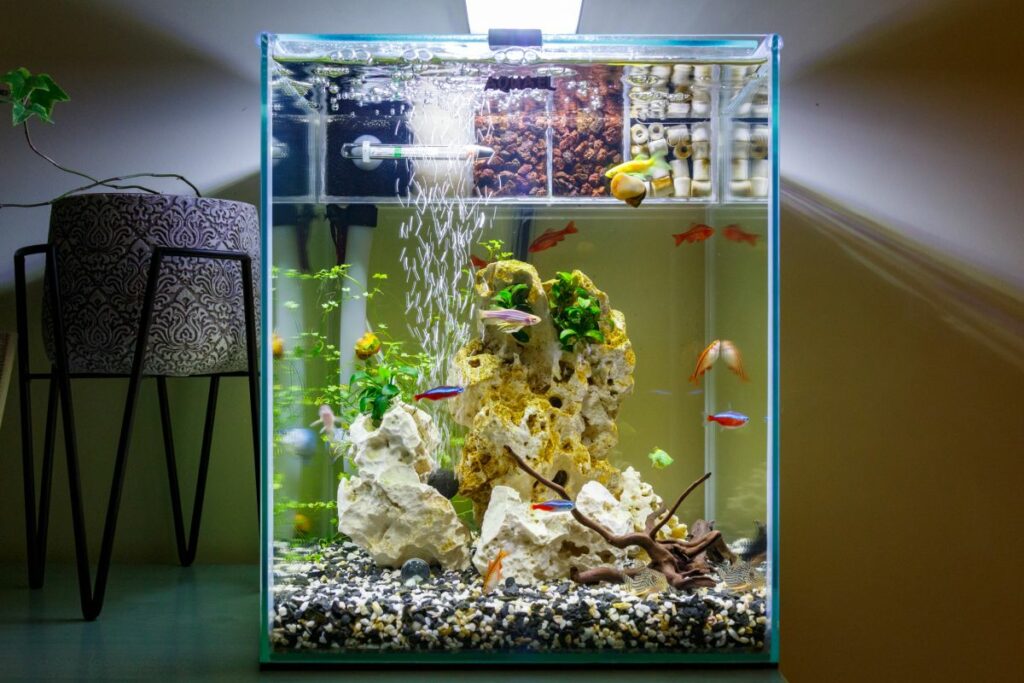
But how do you know what size heater you should get for your aquarium?
Choosing the best equipment for your fish tank can be confusing, so I’ve created this aquarium heater guide for easy reference.
What Is A Fish Tank Heater?
Fish tank heaters are electrical devices that warm up the water and are essential to the survival of tropical fish. If you keep a warm-water species in cold water, it can go into shock, get sick, and eventually die.
Fish can’t create body heat like mammals and instead rely on the temperature of their surroundings to warm their bodies.
Mariana, Alfons, and Gamal Badr describe how temperature fluctuations are bad for fish:
“Changes in the environmental temperature mediate oxidative stress state that affects the
survival rate of fishes. In general, stressors could affect directly as fish death or
indirectly through inhibiting immunity thus allowing pathogen invasion and disease
incidence. Rapid temperature fluctuations cause severe physiological stress on fish so
any temperature change affects the immune system.”
What Kinds Of Aquarium Heaters Are There?
There are seven kinds of aquarium heaters to choose from, so there is a device for every type and size of aquarium.
1. Hanging Aquarium Heaters
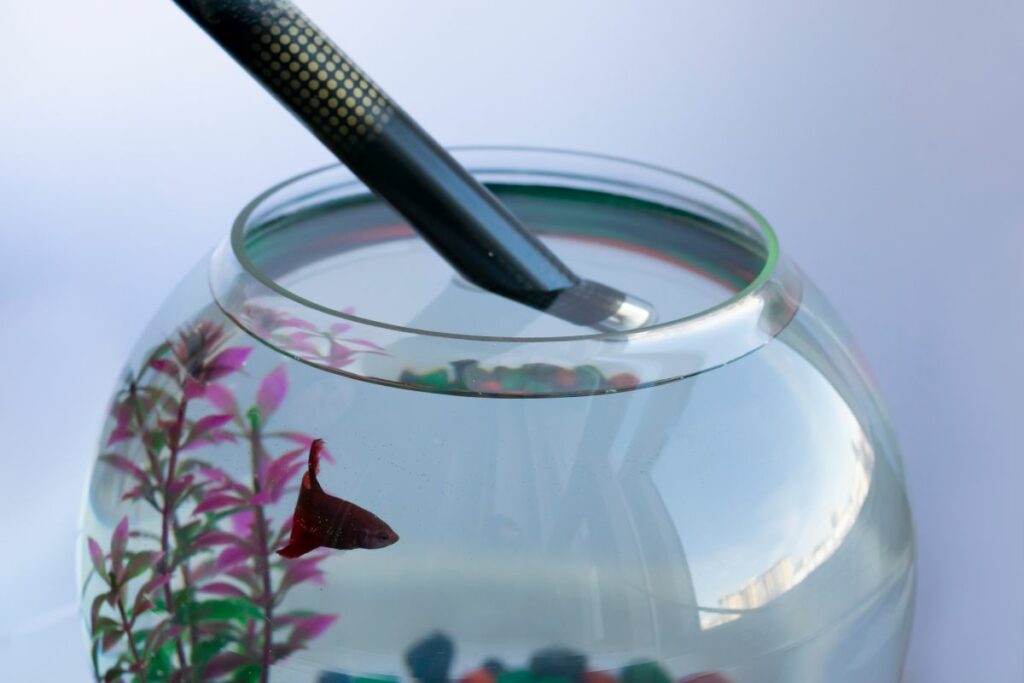
Devices that hang over the side of the tank are the most common and inexpensive kind of heater.
As the name suggests, the heater hangs over the side of the tank and attaches to the glass tank via suction cups. You cannot fully submerge these heaters in water, or you risk electrocution or your heater malfunctioning.
Usually, people keep these heaters at the backs of their tanks. Wherever you place the heater, put it somewhere you won’t knock into it. The glass is fragile, and if it breaks, it poses an electrocution risk to you and your fish.
Hanging aquarium heaters consist of glass tubes containing the heating element which goes into the water. At the top of the tube is a rubber cap. Most heaters have an attachment at the top that you use to adjust the temperature.
2. Submersible Heaters
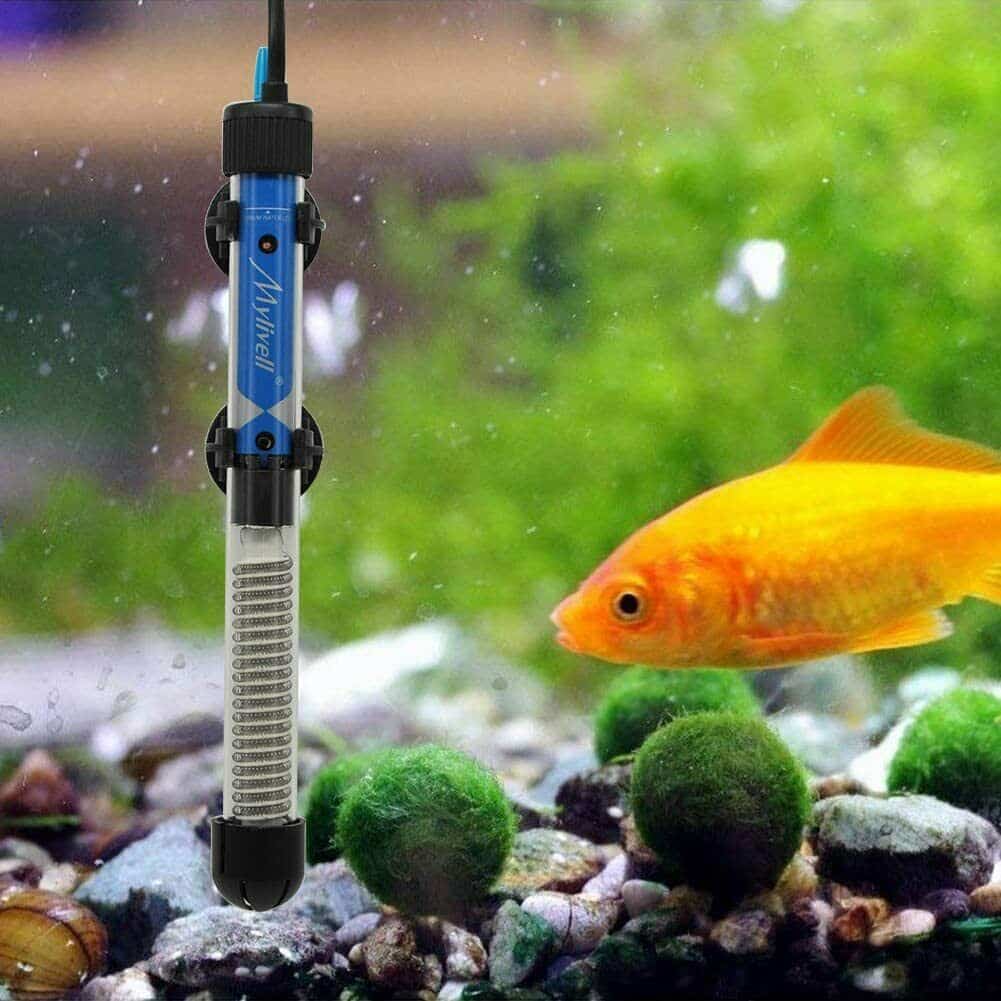
Submersible heaters can be placed entirely in the water, making them more efficient and often safer.
People who use submersible heaters often prefer them because they are easier to position and hide within the tank. Most people place them low in the aquarium, where you can’t see them.
You can hang them vertically, horizontally, and even at an angle. Like hanging heaters, submersible heaters attach to the glass tank via suction cups. Never place the heater against the gravel, or the glass may crack.
Most of these heaters contain internal thermostats that read the current temperature of the water. Internal thermostats are handy because you can set the temperature of the water. The heater will automatically turn on when the water temperature drops and turns off when the temperature is warm enough.
For the most accurate reading, place the heater in a horizontal position at the mid-water level in the tank.
3. Substrate Heaters
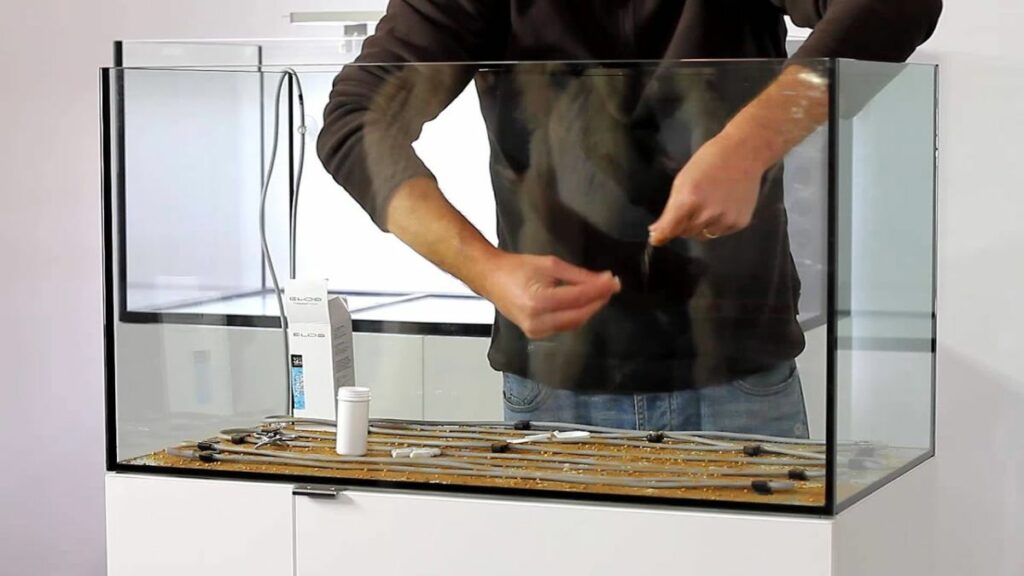
Substrate heaters are less common in the aquarium hobby, likely because they’re harder to clean. They are usually more prevalent among those with planted tanks because the gravel acts as an insulator to keep the plant’s roots warm, which aids growth.
These heaters comprise a coil of wire inside an insulator. The heater sits underneath the substrate.
Rather than heating the water, the heater warms the substrate. The heat from the substrate then radiates into the water. Like the other heaters, substrate heaters have internal thermostats. When the water gets warm enough, the heater automatically shuts off.
4. Filter Heaters
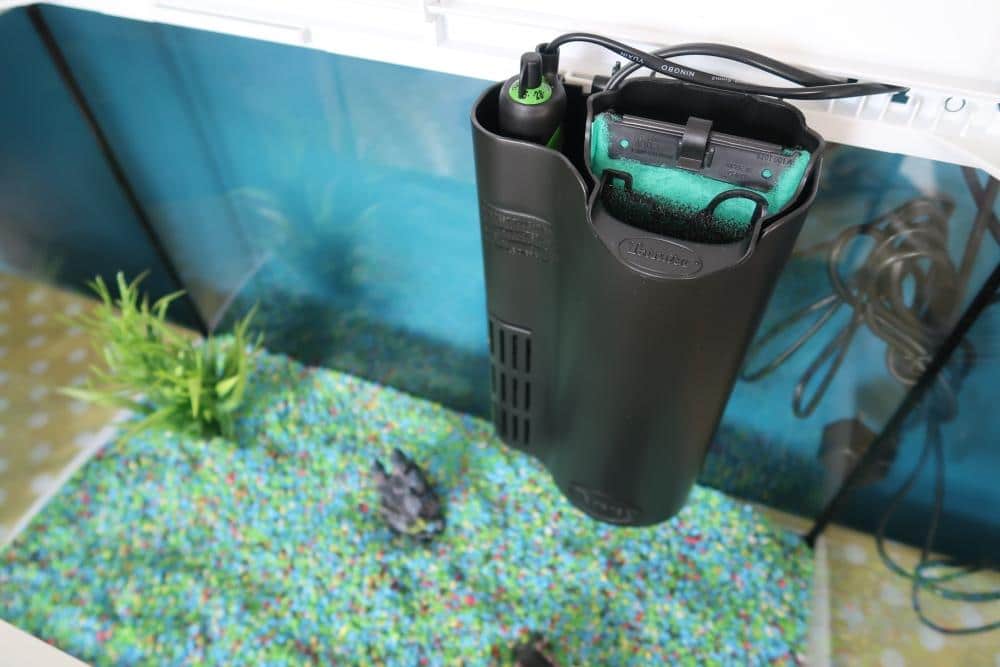
Some heaters come equipped with built-in heaters that heat the water as it passes through the filter. These heaters are most common in canister filters and are very efficient, though more costly.
5. In-Line Aquarium Heaters
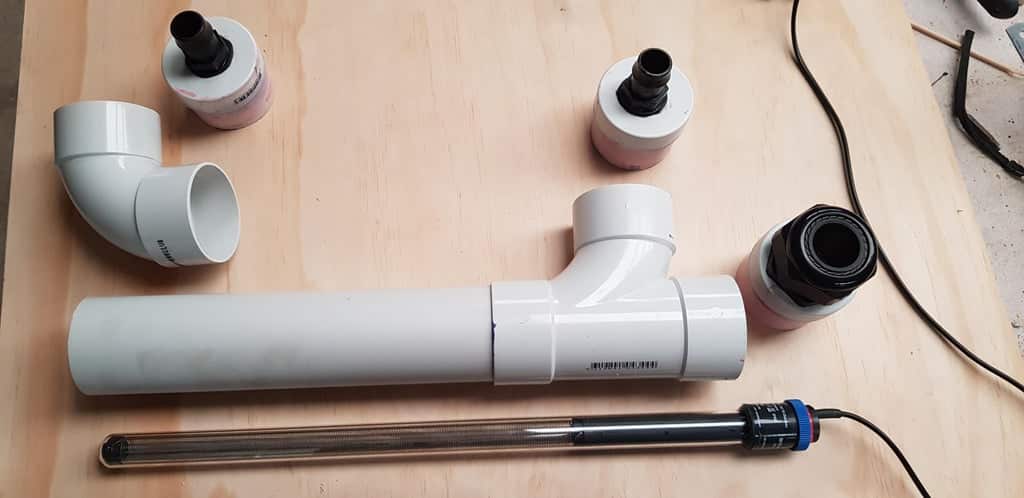
In-line aquarium heaters reside outside the aquarium but attach to a section of external plumbing, such as the filter.
Water pumps move water throughout the heater. You may need to buy a separate water pump for this, but the filter flow might also suffice.
The pump moves the water from the tank, into the line, through the heater, and back into the tank.
6. In-Sump Aquarium Heaters
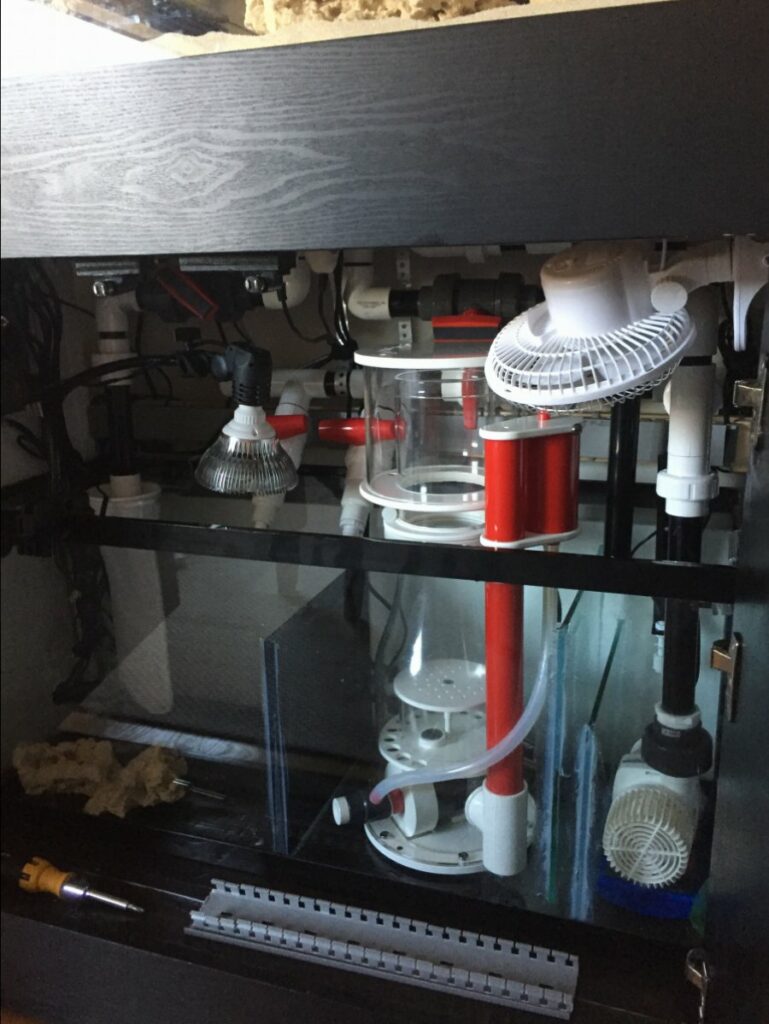
An in-sump heater is not a separate device. Rather, aquarists hook a submersible heater inside their sump to provide heating. Doing so is safer than having the submersible heater inside the tank because it prevents damage from large, feisty fish.
What Size Aquarium Heater Should You Get?
The size heater you choose depends on the temperature of your house and how large your tank is.
Aquarium Heater Wattage Per Gallon
As a general guide, Aqueon explains how many watts you should have per gallon of water:
“A good rule of thumb for aquarium heaters is 5 watts per gallon for aquariums 55 gallons or smaller, and 3 watts per gallon for those over 60 gallons. Use a larger size or a second heater if your aquarium is in an especially cold room or is located on an exterior wall or near an outside door.”
Sometimes, you need to use more wattage than this, depending on how warm you are trying to make your tank.
Aquarium Heater Size Chart
To make your life even easier, I’ve included a chart that explains how large a heater (per watt) you’ll need for your aquarium.
| Tank Size (Gallons) | Watts Needed To Heat The Tank |
| 1 | 5 |
| 2.5 | 12.5 |
| 5 | 25 |
| 10 | 50 |
| 15 | 75 |
| 20 | 100 |
| 25 | 125 |
| 29 | 145 |
| 30 | 150 |
| 40 | 200 |
| 50 | 250 |
| 55 | 275 |
| 65 | 195 |
| 75 | 225 |
| 90 | 270 |
| 125 | 375 |
| 150 | 450 |
| 180 | 540 |
Size Aquarium Heater (Watts) Needed Based On Aquarium Size (Standard Aquarium Sizes — Gallons)
Other Tips For Keeping Your Aquarium Warm
If you choose to use more than one heater, you’ll need to be cautious. The heater’s heating capacity should equal your tank’s required wattage. Also, if you use two heaters, place them on opposite sides of the tank for the most efficient heating.
Place your heater next to the outflow of water from your filter. The heater will warm the water as it leaves the filter to distribute heat throughout the tank.
Always have a thermometer in your tank and check it daily. Multiple thermometers in different locations around the tank are even better. Checking the thermometers every day allows you to ensure the heater is working and the water temperature is uniform throughout the tank.
Make a point to keep an extra heater on hand at all times. If the heater you’re using breaks, you’ll have one immediately available to install and keep your fish warm. If you have to wait a few days to get a new heater, the drop in temperature may be enough to make your fish sick.
Always unplug the heater when draining the tank to prevent it from overheating and breaking.
Conclusion
There are several types of heaters to choose from, and they all work well to heat your aquarium. The most important thing is picking whichever heater is best for you and keeping your fish warm.
Tropical fish almost always require a heater to stay happy and healthy. Cold water can cause them stress and make them sick.
Whichever heater you choose, remember you’ll want about 5 watts for every gallon of water in a tank that is 55 gallons or less. For a larger tank, you’ll want about 3 watts for every gallon of water.
FAQs
There isn’t a single brand that stands out as truly better than the rest. Which brand is best depends on which features you prefer for your aquarium. Some of the best aquarium heater brands include Fluval, Vuetech, Hydor, Aquatop, and Finnex.
If you keep tropical fish, then in most cases, you’ll need an aquarium heater. If you live in an area that is always hot, you may not require a heater, but you should check the water temperature to ensure it’s sufficient.
A heater is always a good idea, even if you live somewhere warm. The temperature outside fluctuates constantly. Using an aquarium heater ensures the water temperature always stays stable, which is healthier for your fish.
Aquarium heaters are generally safe but can malfunction as with any electronic device. It’s essential to keep a thermometer in your tank and check it daily. Doing so will allow you to ensure your tank is staying at the proper temperature.
Sometimes, the internal thermostat may break in your heater, causing the device to overheat and kill your fish. Such an occurrence is rare and easily preventable by keeping an eye on the thermometer.
Leaving an aquarium heater on overnight is perfectly safe, and you should do so. Turning the heater off will cause the temperature to drop, especially on nights when it’s freezing. Turning the heater off at night will cause near-constant fluctuations in the water temperature. Fluctuations are stressful for your fish and may cause them to become sick.
